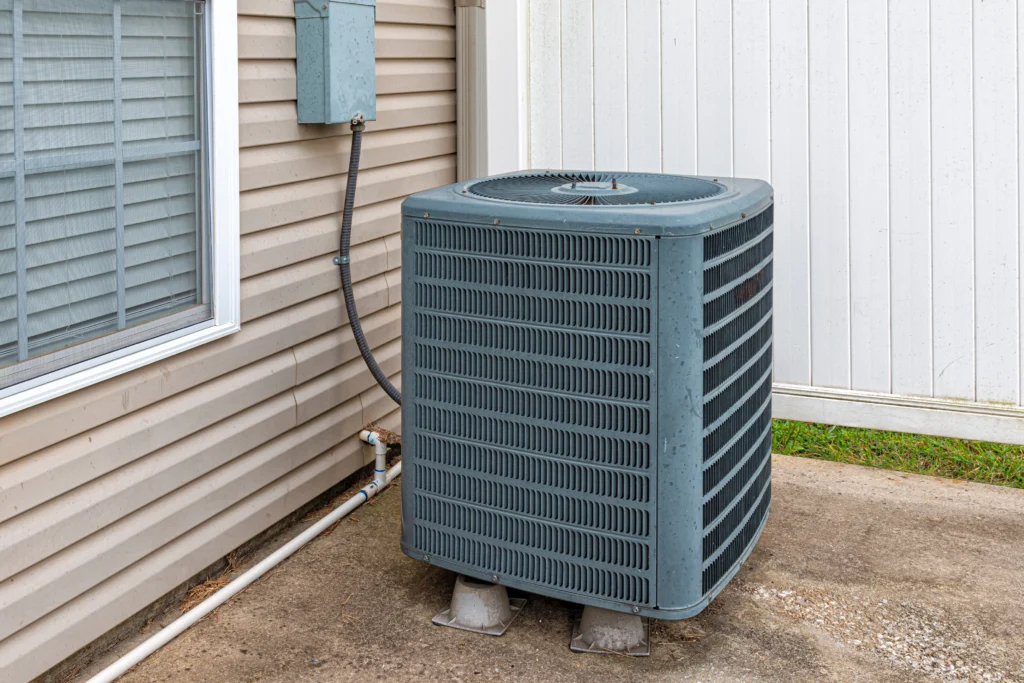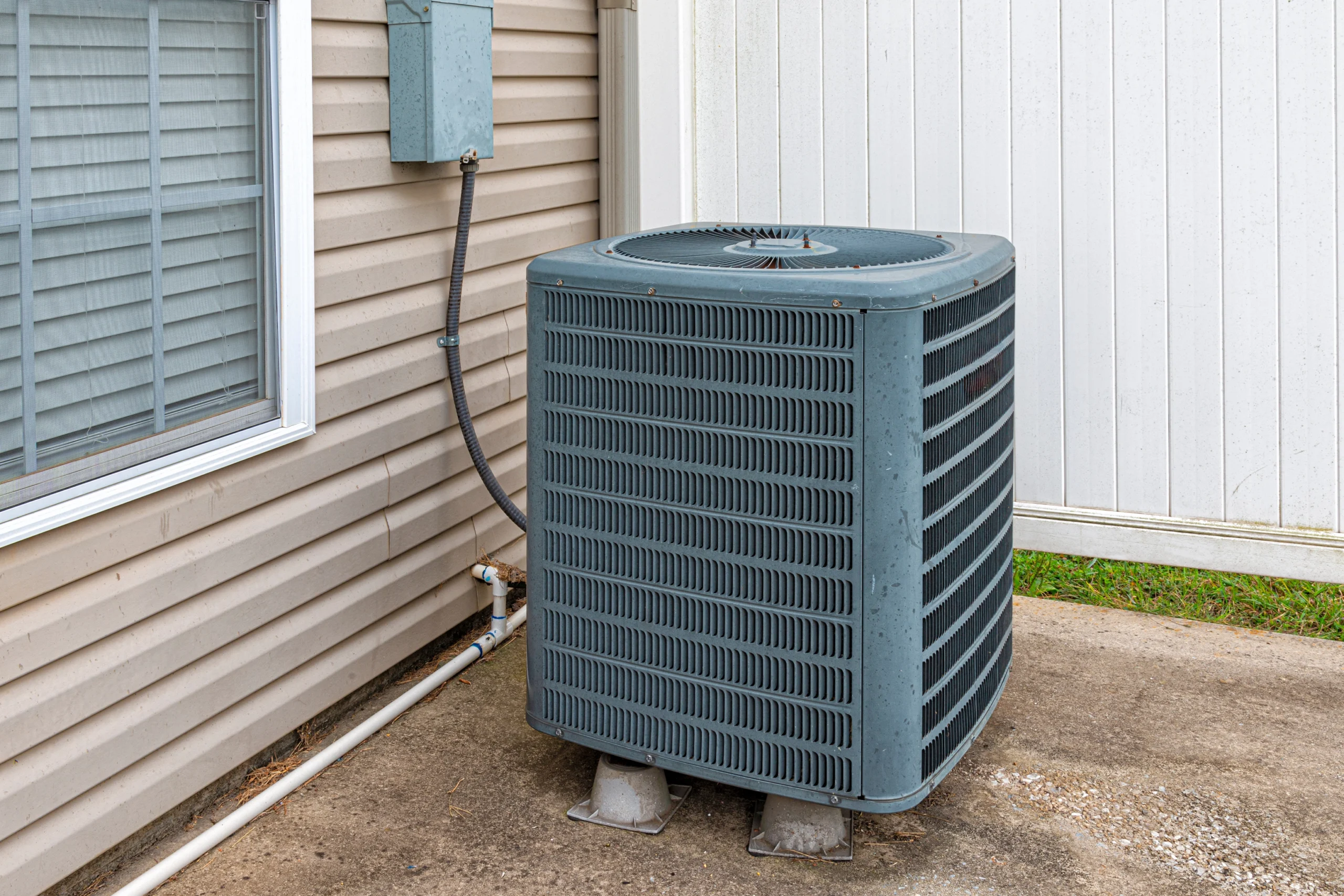Air conditioners, or as they are commonly referred to as ACs, are important appliances that are tasked with regulating the temperature of our indoor air in warm and humid places like New Jersey. Most ACs come with an average warranty of 10 years. However, this service span is subject to variation due to several factors for instance lack of a proper maintenance regime.
If your AC is producing warmth when it ought to give cold air and vice versa, making weird noises, or your power bills have gone high above normal, or the equipment is more than 10 years old, then it simply means it is time for a replacement. Whether replacing or installing a new AC, the process is the same. This article delves into the detailed installation of a central air conditioner.
Assessment and Planning

Air Conditioning Unit On The Patio Behind A Condo.
The process begins with your contractor assessing the installation site. The assessment helps them determine what AC model and size is right for you, depending on the size of your home, climate, cost and insulation. The layout of your floor space plays a key role in determining whether you need a ducted or a ductless system. For instance, very big homes in hot and humid areas like NJ, you will need a more powerful system with a ductwork to allow for more conditioning.
Obtaining Permits
Most cities have local ordinances that guide building and safety codes, and NJ is no different. When installing an HVAC, your home has to undergo some inspection by the relevant municipal authorities. The inspections are aimed at ascertaining that your home and new equipment comply with the laid codes. Since they are familiar with these regulations, your contractor will help apply, comply with the regulations and obtain the necessary permits.
Installations
Having settled on your preferred system type and model, the contractor will then embark on the installation works. Depending on whether you have enough floor space and layout that allows for a ducted system, the contractor will begin the installation by laying down the ductwork. It will involve digging channels through walls and ceilings. The channels will lead to the exterior of your house where warm air will be lost to the surroundings.
Air Handler and Condenser Units
By use of refrigerant lines, the contractor will then connect the air handler which is simply the inside unit to the outside unit or the condenser. The inside unit collects the warm indoor air and pushes it to the exterior through the condenser that in turn converts the hot air into water that we see oozing out of the outside unit.
Thermostat
Installation of the system units will be followed by the calibration of the thermostat. The thermostat is the component that allows you to set your desired indoor temperature.
Electrical Wiring
The contractor will then install the electrical wiring to be utilized by the central AC. These will be connected to your home electric mains. Depending on the layout of the space where the unit is installed, the contractor may or may not need additional circuits. Having done that, the installation will be considered successful and complete when the system is tested in the next step.
Testing and Adjustments
Having finished with the components, the contractor will then complete the installation works by testing the system. They will do this by switching on the power button and the power plug. The professional will examine the blowing rate and quality of air compared to the readings on the thermostat. If there are adjustments, they will be done at this point.
Cleanup
Cleanup and disposal of any debris from the work area will signal the end of the process. This will be followed by a final walkthrough to ensure that everything fits perfectly. It is also at this stage that you will be requested to sign the warranty agreement.
As you have noticed throughout the discussion, we emphasized more on the role of a professional in the installation of a central AC over a DIY. An equipment of this nature is expensive and is a little complex to handle. Without proper installation that can only be guaranteed by an HVAC professional, the system may never attain its expected service span. This is not unless you have experience in HVAC installation and maintenance. You have to bear in mind the size of investment you may be risking with a DIY and the effect of an improper installation. Therefore, it is imperative to involve the service of a professional.

